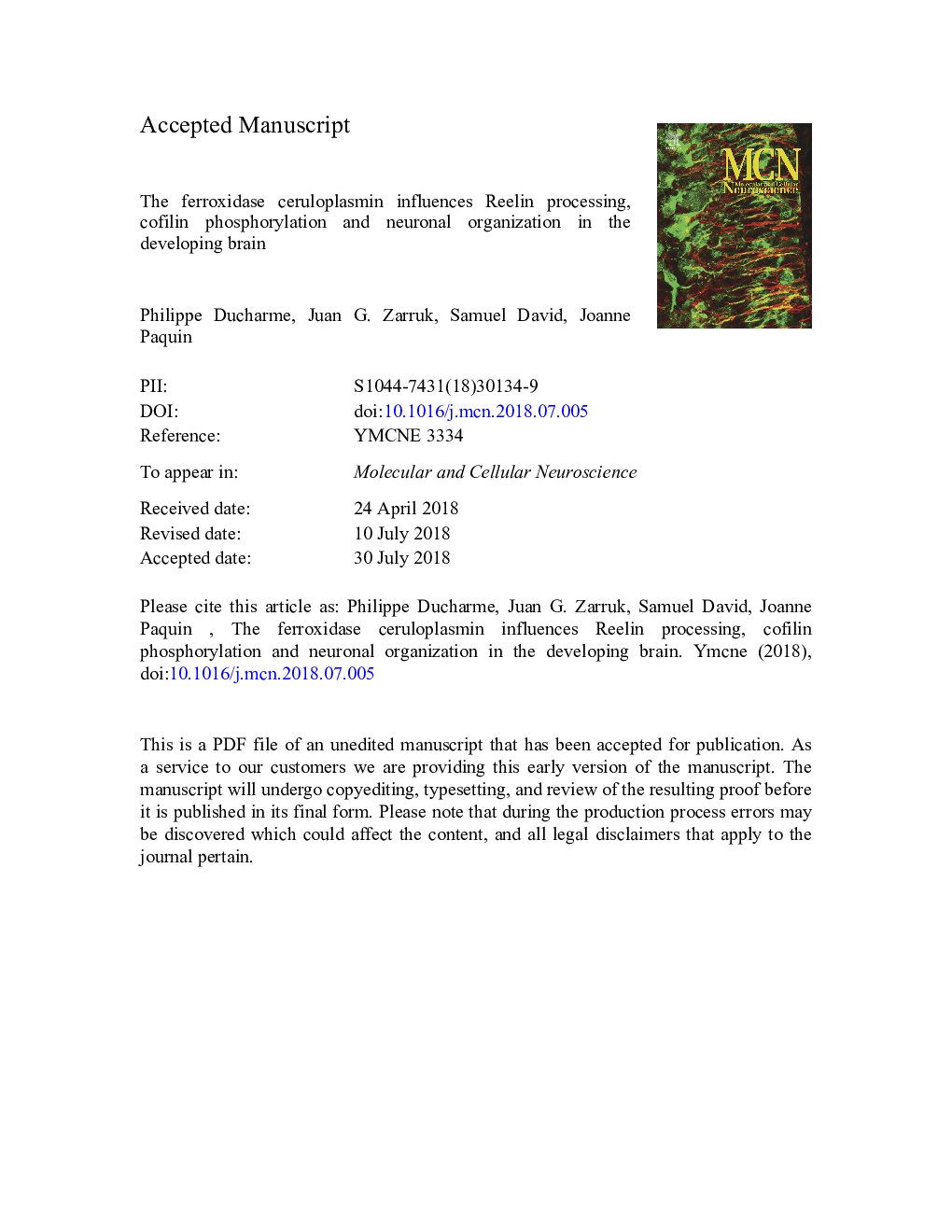| Article ID | Journal | Published Year | Pages | File Type |
|---|---|---|---|---|
| 8478342 | Molecular and Cellular Neuroscience | 2018 | 26 Pages |
Abstract
Ceruloplasmin (Cp) is an important extracellular regulator of iron metabolism. We showed previously that it stimulates Reelin proteolytic processing and cell aggregation in cultures of developing neurons. Reelin is a secreted protein required for the correct positioning of neurons in the brain. It is cleaved in vivo into N-terminally-derived 300K and 180K fragments through incompletely known mechanisms. One of Reelin signaling targets is the actin-binding protein cofilin, the phosphorylation of which is diminished in Reelin-deficient mice. This work looked for in vivo evidence of a relationship between Cp, Reelin and neuronal organization during brain development by analyzing wild-type and Cp-null mice. Cp as well as the full-length, 300K and 180K Reelin species appeared together in wild-type brains at embryonic day (E) 12.5 by immunoblotting. In wild-type compared to Cp-null brains, there was more 300K Reelin from E12.5 to E17.5, a period characterized by extensive, radially directed neuronal migration in the cerebral cortex. Immunofluorescence labeling of tissue sections at E16.5 revealed the localization of Cp with radial glia and meningeal cells adjacent to Reelin-producing Cajal-Retzius neurons, underlining the proximity of Cp and Reelin. Cofilin phosphorylation was seen starting at E10.5-E12.5 and lasted longer until postnatal day 7 in wild-type than Cp-null mice. Finally, using CUX1 as a marker revealed defective accumulation of neurons in layers II/III in neonatal and adult Cp-null mice. These results combined with our earlier work point to a potentially new role of Cp in Reelin processing and signaling and neuronal organization in the cerebral cortex in vivo.
Keywords
Related Topics
Life Sciences
Biochemistry, Genetics and Molecular Biology
Cell Biology
Authors
Philippe Ducharme, Juan G. Zarruk, Samuel David, Joanne Paquin,
